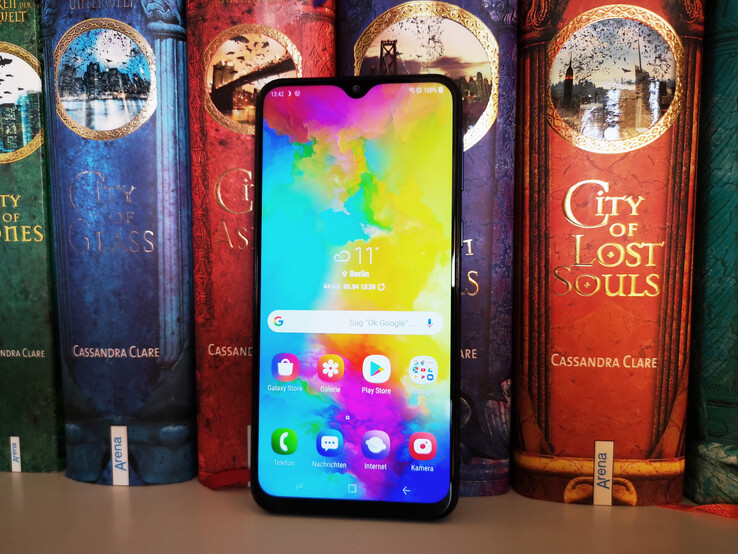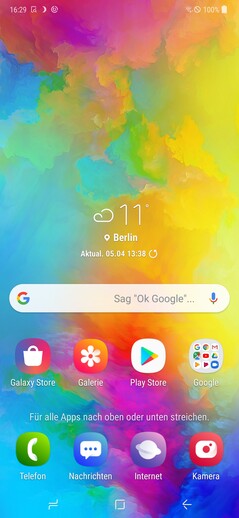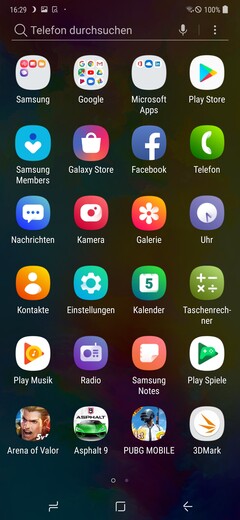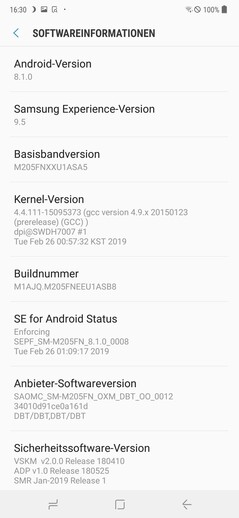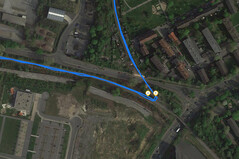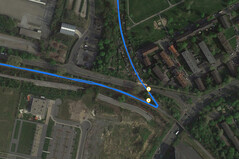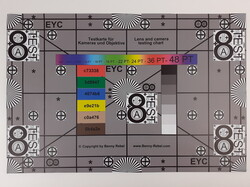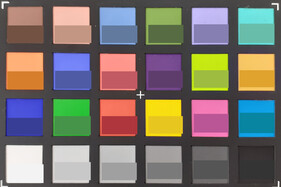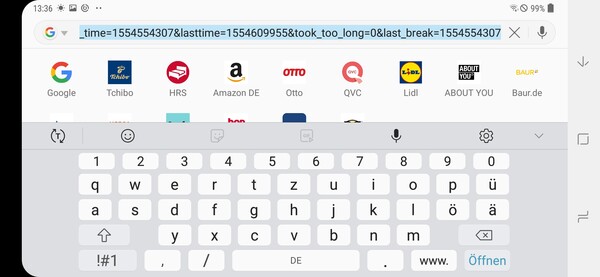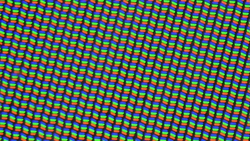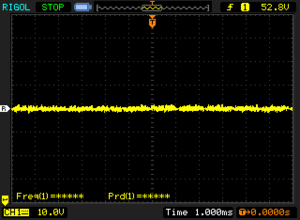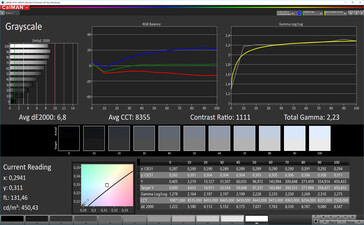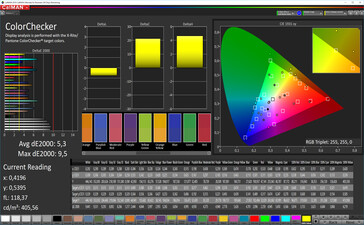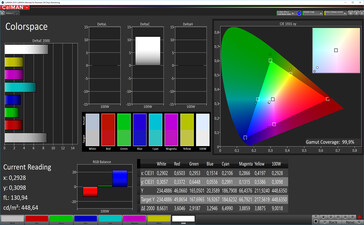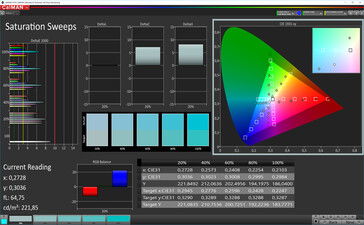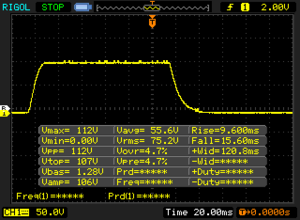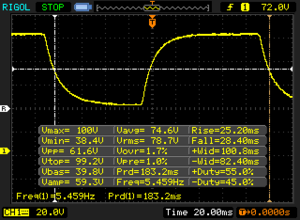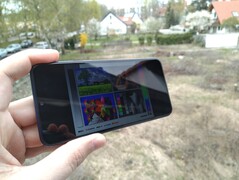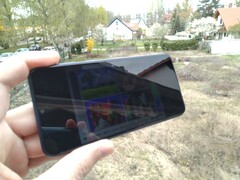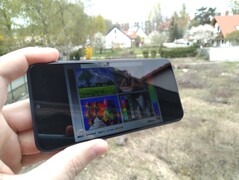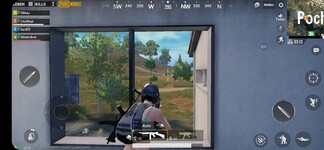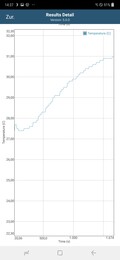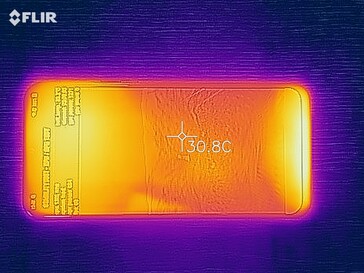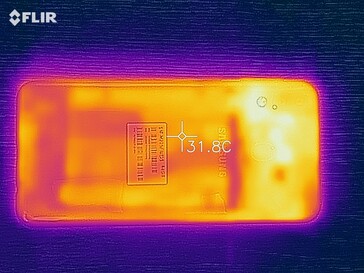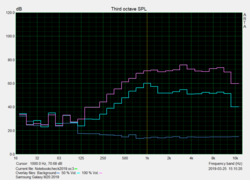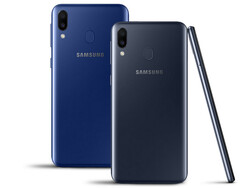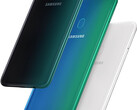Samsung Galaxy M20 Smartphone Review
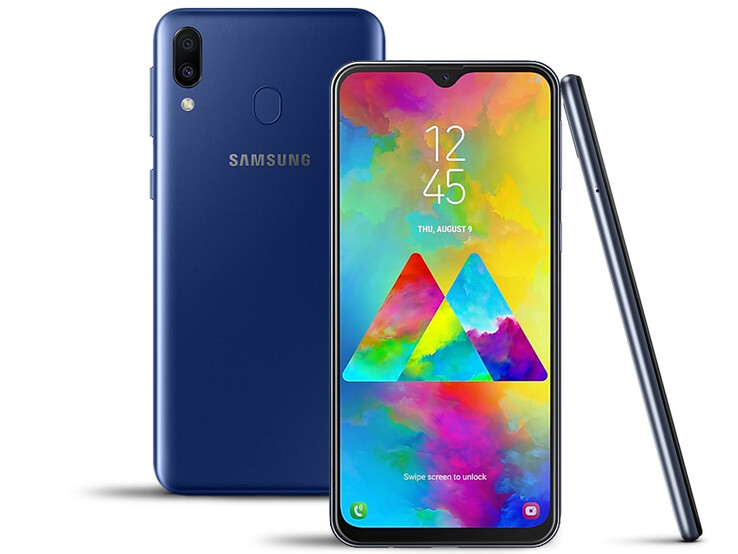
Samsung is falling under increasing pressure from Chinese competitors who have long since offered really good smartphones for little money. Accordingly, the market leader is looking for ways and means to keep competitors away and this results in quite chaotic actions. The best example of this is the M series. The Samsung Galaxy M20 was originally only launched in India, where Samsung is suffering more and more from the fierce price war with Chinese competitors such as Xiaomi, Oppo and Vivo. Then the change of direction came and Samsung announced the M models for Europe too. Here, they are touted with premium features at entry-level price and to increase the interest, it was initially said that the Samsung Galaxy M20 will be sold for only a few days in Germany. Meanwhile, it is clear: Retailers such as Amazon and Co. continue to offer the M20 at the manufacturer price of 229 Euros (~$259). Any trickery here? That would be a dangerous game because there is also enough competition in Germany including Asus Zenfone Max Pro (M2), Huawei P Smart Plus (2018), Motorola Moto G7 Power but also the Elephone A5.
Case - "Back to the Roots" Is Not Always Good
Those taking the Samsung Galaxy M20 for the first time in their hands might wonder about the weight of the device, which is a bit too high for a 6.3-inch smartphone. However, nobody will suspect that the model offers a battery with the staggering 5,000 mAh. The middle-class smartphone is not overly thick at 8.8 millimeters (~0.35) and its plain design makes it anything but ugly. The Galaxy M20 has definitely nothing in common with the battery wonders of earlier days.
However, the M20 is not on par with the A- or even S-class of the Korean manufacturer. Although the device looks quite high-quality at first glance, with its narrow display bezels, the pleasant curves on the sides and the waterdrop notch, there are still minor weaknesses in the details. Thus, the plastic back cannot keep up with higher-quality glass backs neither from a haptic, nor from an optic perspective. Moreover, the part of the body around the fingerprint sensor sounds hollow since the plastic does not seem to be connected with the internals of the device. This is strikingly reminiscent of old models such as Galaxy S7 or Galaxy S6.
After all, the general workmanship is neat, there are no irregular gaps and our moderate twisting attempts did not cause any creaking noises. However, the volume buttons on the right have a slightly hard, and depending on the button, different pressure points. The power button showed a minimal lateral movement. Especially given the low manufacturer price of 229 Euros (~$259), the look and feel of device's workmanship are absolutely fine, even though some competing products have more to offer here.
Equipment - Very Good On Paper
A 6.3-inch display with Full HD+ resolution, 64 GB of internal memory, an Exynos 7885 with eight cores and up to 1.8 GHz clock speed, as well as 4 GB of RAM and a dual camera with super wide angle - it feels really nice to read all that. The rest of the equipment such as LTE to Cat 10, Bluetooth 5.0, USB Type-C, fingerprint sensor, 3.5-millimeter port for conventional headphones, NFC and Wi-Fi is quite comprehensive on paper, but in detail there are a few limitations. Positive is the fact that the internal memory may be expanded by up to 512 GB with microSD card in addition to two Nano SIM cards.
Thus, the WLAN module lacks the faster ac-5 GHz band, the case is not protected against dust and water, the fingerprint sensor is placed a bit too high and an IR blaster is looked for in vain. On the other hand, the buyer of the Galaxy M20 can enjoy a Widevine Level 1 certification which makes the high-resolution playback of streaming services possible. This is often looked for in vain with favorable competitors from China.
Software - Old Version of Android with Promise for Update
In terms of software, Samsung deserves to be accused of delivering the device with version 8.1 Oreo instead of the current Android 9 Pie. The manufacturer user interface Experience UX in version 8.5 is installed on top which not only extends the look, but also the functionality of Android. After all: Although Samsung has not always been known for an exemplary update policy especially with cheap models, the manufacturer has already promised an update to Android 9. It is currently scheduled for August 2019.
A positive fact: Apart from the Microsoft Office Mobile apps, OneDrive and LinkedIn, there is no bloatware except Facebook and some Samsung apps. Thus, a total of just over 50 GB of the 64 GB internal memory is available at delivery.
Communication and GPS - Slow WLAN in the M20
In terms of Wi-Fi speed, the Samsung Galaxy M20 braves the test with our reference router Linksys EA8500 decently given its price tag. The overall picture is much better though. On average, smartphones show a reception which is almost five times faster, even the inexpensive Elephone A5 is ahead of the Samsung model. When sending data, the competition is also much faster, here the M20 is pretty far below. The connection to the mobile data network is established with LTE Cat. 10 in the best case. That should be sufficient for most users, especially since the theoretical download speed of 450 Mbit/s is almost impossible to reach in reality. There are no problems with the available LTE frequencies of the M20 in Europe, but the smartphone is not a true global phone. There were no problems with the reception during the test.
| Networking | |
| iperf3 transmit AX12 | |
| Elephone A5 | |
| Asus Zenfone Max Pro M2 ZB630KL | |
| Huawei P Smart Plus | |
| Motorola Moto G7 Power | |
| Samsung Galaxy M20 | |
| iperf3 receive AX12 | |
| Elephone A5 | |
| Asus Zenfone Max Pro M2 ZB630KL | |
| Samsung Galaxy M20 | |
| Huawei P Smart Plus | |
| Motorola Moto G7 Power | |
In terms of the reception quality of the GPS module, there are better alternatives too. While some competing products are able to determine the location even inside buildings, the low-priced Samsung model gives up even near windows. Accordingly, the M20 always requires clear skies for successful use of GPS, but in this case the smartphone performs surprisingly well.
Although it takes a few seconds before accurate location is possible, the navigation turned out to be quite precise compared to a professional device such as the Garmin 500. This results in a fluid recording of the movement, while the Garmin model occasionally skips certain distances due to the lack of a clear position data in the meantime. The M20 supports the GPS, GLONASS and Beidou positioning systems.
Telephone Features and Call Quality - New Hardness
In the phone app, the "Places" tab, which had been previously deleted from Samsung, has returned. It lists well-rated restaurants and shops in the area and coupons are found accordingly. The rest of the app is clear and intuitive to use as always.
The call quality during normal telephone calls is loud and almost too clear. The mids are strongly emphasized so that the sound is very hard. A bit more low tone and slightly reduced mids and highs would have created a more natural sound experience. That does not change much in terms of audibility. The microphone reacts sensitively enough even with quiet speech, so that no syllables are missed. In noisy environments, however, the ambient noise should be suppressed better.
The hands-free function works just as well as normal phone calls. The volume here is high and the sound is quite sharp too. The microphone records speech well, but ambient noises are also included more or less. Therefore, a quieter environment is needed. Regarding the reception strength we had nothing to complain about in the test of the Samsung Galaxy M20.
Cameras - Not Suitable for Night Photos
The Samsung Galaxy M20 has a combination of normal wide-angle and ultra-wide-angle camera which is rare in this price range. The main lens allows shooting photos with up to 13 megapixels with f/1.9 aperture, the second optics offers 5 megapixels, f/2.2 aperture and a field of view of 120 degrees. The front camera resolves with up to 8 megapixels and offers an aperture of f/2.0.
The quality of both the front camera and the main camera is consistent at least in one point: The image quality in low light drops rapidly to the point of uselessness. Although this is often the case with smartphones of the entry-level and middle class, it is particularly pronounced in the M20. Night shots are barely lightened up, which comes close to what the human eye actually sees, but at the same time the image sharpness decreases rapidly. Taking pictures at night is therefore hardly usable. After all, because of the low image brightness, image noise is not to be discussed here.
In bright sunlight things look a bit different. The main camera and the front camera take pictures that are quite sharp, the front camera lacks only a bit of color intensity and the image dynamic should be more pronounced. This is a common problem for both cameras because bright areas in images are more or less noticeable. The 13 megapixel shots in good light conditions have the right sharpness and degree of detail. When using the zoom, however, a somewhat aggressive post-processing is visible. Furthermore, the sharpness in our test device dropped slightly to the right edge.
Wide-angle shots cannot keep up with the sharpness even in good light conditions, although the software is trying hard to get out even more here. However, when using zoom, this usually results only in pixel magnification. In addition, there are big differences in color reproduction between wide-angle and ultra-wide-angle shooting. While the larger lens is a bit cool, the ultra wide-angle lens is too warm. Moreover, typical wide-angle distortions are not taken correctly into consideration by the camera of the Samsung Galaxy M20. This makes motifs with straight lines look as if they were shot with a fisheye lens.
Videos with 30 frames per second should also be sharper and the missing option of 4K video recording is truly disappointing. Due to the lack of image stabilization, a tripod would be necessary anyway if still shots are the goal. However, since the camera quality is generally unconvincing, it is not worth bringing one. Low price or not: When it comes to camera, Samsung delivers too little. For around 40 Euros (~$45) more, those who value a good camera should preferably grab the Moto G7 Plus with 16 megapixels and optical image stabilizer.
Under laboratory conditions, the practical experience from the test is confirmed. The test shots under good lighting conditions seem sufficiently sharp and sometimes colors show strong deviations from the original.
Accessories and Warranty - Samsung Galaxy M20 with Throwaway Headset
There are no surprises in the box contents - if any, then this is at most the headset, which Samsung includes despite of Galaxy M20's low price. The competition often does not do that. One should not expect too much from the M20. The frighteningly cheap-looking headset delivers almost no low tone and a slightly excessive midrange. It is good enough to be used right out of the box, enjoying music, however, is out of the question. The rest of the box includes a separate Type-C cable, a 15-watt charger, some paperwork concerning warranty and operation, as well as a SIM tool. Samsung gives a 24-month warranty on the Galaxy M20.
Input Devices & Operation - Not an Optimal Fingerprint Sensor Position
The operation of the touch screen did not cause any problems in the course of the test. Despite the comparatively low price, Samsung has provided the display of the Galaxy M20 with a neat coating, thanks to which the fingers can glide smoothly during operation and only a small amount of grease remains on the surface. There were no problems with the registration of touches also at the edges.
The fingerprint sensor on the back worked mostly in an exemplary manner. The occasional false recognition probably occurred due to its somewhat too high position. Often, even users with large hands do not quite hit the center of the sensor. When the position is right, the response is reasonably fast. Unfortunately, the sensor does not give any feedback by means of vibration and this makes it a bit difficult to feel. Therefore, a look at the back is necessary every now and then.
In the test, we also missed a notification LED. An always-on display is not offered by the M20 either.
Display - Really Good for the Price!
The panel of the Samsung Galaxy M20 has a size of 6.3 inches and a resolution of 2,340x1,080 pixels. This results in a good image sharpness of 409 pixels per inch. The manufacturer reports a 6.3-inch FHD+ Infinity-V TFT display, but hidden behind is nothing more than an IPS LCD with bezel-less design and V- or drop-shaped notch. That may disappoint all the fans of the brand who had hoped for an Amoled display, but given the price of the M20, this could not be expected.
| |||||||||||||||||||||||||
Brightness Distribution: 92 %
Center on Battery: 452 cd/m²
Contrast: 1102:1 (Black: 0.41 cd/m²)
ΔE ColorChecker Calman: 5.3 | ∀{0.5-29.43 Ø4.79}
ΔE Greyscale Calman: 6.8 | ∀{0.09-98 Ø5}
99.9% sRGB (Calman 2D)
Gamma: 2.23
CCT: 8355 K
| Samsung Galaxy M20 PLS TFT, 2340x1080, 6.3" | Motorola Moto G7 Power IPS, 1570x720, 6.2" | Huawei P Smart Plus IPS/LTPS, 2340x1080, 6.3" | Elephone A5 IPS, 2246x1080, 6.2" | Asus Zenfone Max Pro M2 ZB630KL 2280x1080, 6.3" | |
|---|---|---|---|---|---|
| Screen | 20% | 10% | 28% | -14% | |
| Brightness middle (cd/m²) | 452 | 608 35% | 479 6% | 422.4 -7% | 511 13% |
| Brightness (cd/m²) | 445 | 585 31% | 471 6% | 414 -7% | 494 11% |
| Brightness Distribution (%) | 92 | 92 0% | 94 2% | 87 -5% | 88 -4% |
| Black Level * (cd/m²) | 0.41 | 0.36 12% | 0.27 34% | 0.17 59% | 0.49 -20% |
| Contrast (:1) | 1102 | 1689 53% | 1774 61% | 2485 125% | 1043 -5% |
| Colorchecker dE 2000 * | 5.3 | 5.08 4% | 6.24 -18% | 4.06 23% | 8.3 -57% |
| Colorchecker dE 2000 max. * | 9.5 | 8.74 8% | 10.05 -6% | 8.57 10% | 12.6 -33% |
| Greyscale dE 2000 * | 6.8 | 5.9 13% | 7.4 -9% | 4.8 29% | 8.1 -19% |
| Gamma | 2.23 99% | 2.219 99% | 2.39 92% | 2.3 96% | 3.31 66% |
| CCT | 8355 78% | 7772 84% | 8942 73% | 7003 93% | 7648 85% |
* ... smaller is better
Screen Flickering / PWM (Pulse-Width Modulation)
| Screen flickering / PWM not detected | |||
In comparison: 53 % of all tested devices do not use PWM to dim the display. If PWM was detected, an average of 8152 (minimum: 5 - maximum: 343500) Hz was measured. | |||
The touch screen of the Samsung Galaxy M20 is also exemplary when checked for flickering. The latter often occurs when dimming the brightness, usually by pulse width modulation (PWM). We could not find any flickering in the test, thus the screen is also suitable for users who are particularly sensitive to shimmery displays.
Ultimately, the technology used is secondary and it is important how the screen performs in everyday life. Overall, it does that quite well. The brightness is satisfactory with up to 460 cd/m² and the brightness distribution is exemplary. Black level and contrast could be better, but this is not noticeable in everyday life. The same applies to the fidelity of grayscale and colors. When determining the brightness with uniform distribution of light and dark areas (APL 50), the Galaxy M20 reaches up to 445 cd/m². Considering the price that is a decent value.
Our measurements with the CalMAN professional software resulted in an acceptable contrast ratio of 1,111:1 and an excessive proportion of the blue color common for LCDs. Furthermore, the coverage of the sRGB color space is decent. The grayscale deviation in the test was 6.8 delta E in average and as little as 5.3 delta E for the colors. Both are difficult to see with the naked eye and therefore absolutely within reasonable limits.
Display Response Times
| ↔ Response Time Black to White | ||
|---|---|---|
| 25.2 ms ... rise ↗ and fall ↘ combined | ↗ 9.6 ms rise | |
| ↘ 15.6 ms fall | ||
| The screen shows relatively slow response rates in our tests and may be too slow for gamers. In comparison, all tested devices range from 0.1 (minimum) to 240 (maximum) ms. » 59 % of all devices are better. This means that the measured response time is worse than the average of all tested devices (20.3 ms). | ||
| ↔ Response Time 50% Grey to 80% Grey | ||
| 53.6 ms ... rise ↗ and fall ↘ combined | ↗ 25.2 ms rise | |
| ↘ 28.4 ms fall | ||
| The screen shows slow response rates in our tests and will be unsatisfactory for gamers. In comparison, all tested devices range from 0.165 (minimum) to 636 (maximum) ms. » 90 % of all devices are better. This means that the measured response time is worse than the average of all tested devices (31.7 ms). | ||
Despite the decent values of the display, users of the Galaxy M20 would need to find a shady place in the summer if they want to recognize the contents on the screen in direct sunlight. Significantly better here, are either very bright AMOLED screens as in the Samsung Galaxy S10+ flagship or very bright LCDs as in the mid-range LG G7 Fit model. They are also noticeably more expensive though. The viewing angle stability of the panel, on the other hand, is very good.
Performance - Enough for Everyday Use
In the Galaxy M20, Samsung has opted for an Exynos 7885 with a clock speed of up to 1.8 GHz and an ARM Mali G71 MP2. In terms of performance, the chip clearly ranks behind a Kirin 710 and more or less just behind a Snapdragon 632. In the benchmarks, the GPU in particular quickly reaches its limit. This sometimes results in a decent gap compared to the listed competing products. Hardly anyone will notice this in everyday life due to the good coordination of the operating system, user interface and hardware. The latter includes the generous 4 GB of RAM. Thus, no glitches can be seen.
The poorer performance of the M20 is striking compared to other smartphones with the same Exynos 7885. Some of them are more than 30 percent faster. This gives the impression that Samsung throttles the chip in this low-priced model to artificially create distance to their higher-priced smartphones such as the A series.
| AnTuTu v7 - Total Score (sort by value) | |
| Samsung Galaxy M20 | |
| Motorola Moto G7 Power | |
| Huawei P Smart Plus | |
| Elephone A5 | |
| Asus Zenfone Max Pro M2 ZB630KL | |
| Average Samsung Exynos 7904 (101367 - 109906, n=4) | |
There are just as few problems with Internet usage. The M20 performs significantly better also in the benchmarks and can partly put itself ahead of the competition.
| Jetstream 2 - 2.0 Total Score | |
| Average of class Smartphone (23.8 - 387, n=155, last 2 years) | |
| Average Samsung Exynos 7904 (22.1 - 25.7, n=4) | |
| Samsung Galaxy M20 (Samsung Brwoser 9.2) | |
| Speedometer 2.0 - Result 2.0 | |
| Average of class Smartphone (15.2 - 643, n=131, last 2 years) | |
| Average Samsung Exynos 7904 (19.3 - 24.1, n=4) | |
| Samsung Galaxy M20 | |
| WebXPRT 3 - Overall | |
| Average of class Smartphone (38 - 380, n=40, last 2 years) | |
| Huawei P Smart Plus (Chrome 71) | |
| Samsung Galaxy M20 | |
| Average Samsung Exynos 7904 (43 - 56, n=4) | |
| Octane V2 - Total Score | |
| Average of class Smartphone (2228 - 121337, n=202, last 2 years) | |
| Huawei P Smart Plus (Chrome 71) | |
| Samsung Galaxy M20 | |
| Elephone A5 (Chrome 71) | |
| Asus Zenfone Max Pro M2 ZB630KL (Chrome 71) | |
| Motorola Moto G7 Power | |
| Average Samsung Exynos 7904 (7798 - 9087, n=4) | |
| Mozilla Kraken 1.1 - Total | |
| Average Samsung Exynos 7904 (3703 - 5707, n=4) | |
| Asus Zenfone Max Pro M2 ZB630KL (Chrome 71) | |
| Elephone A5 (Chrome 71) | |
| Huawei P Smart Plus (Chrome 71) | |
| Samsung Galaxy M20 | |
| Average of class Smartphone (257 - 28190, n=157, last 2 years) | |
* ... smaller is better
In terms of the memory of the Samsung Galaxy M20, there is hardly anything to complain about. Overall, the inexpensive smartphone is usually on par with the competition - both in terms of the speed of the internal memory, as well as the measurements with our reference memory card Toshiba Exceria Pro M501.
| Samsung Galaxy M20 | Motorola Moto G7 Power | Huawei P Smart Plus | Elephone A5 | Asus Zenfone Max Pro M2 ZB630KL | Average 64 GB eMMC Flash | Average of class Smartphone | |
|---|---|---|---|---|---|---|---|
| AndroBench 3-5 | 22% | 25% | -1% | 27% | -4% | 719% | |
| Sequential Read 256KB (MB/s) | 300 | 292.4 -3% | 303.2 1% | 291.9 -3% | 285.5 -5% | 277 ? -8% | 2202 ? 634% |
| Sequential Write 256KB (MB/s) | 137 | 215.2 57% | 200.5 46% | 213.9 56% | 198.9 45% | 178.4 ? 30% | 1819 ? 1228% |
| Random Read 4KB (MB/s) | 64 | 67.5 5% | 102.5 60% | 60.4 -6% | 74.9 17% | 60.7 ? -5% | 292 ? 356% |
| Random Write 4KB (MB/s) | 44 | 72 64% | 74 68% | 24.35 -45% | 88.2 100% | 33.8 ? -23% | 334 ? 659% |
| Sequential Read 256KB SDCard (MB/s) | 81.5 ? | 86.7 ? 6% | 76.9 ? -6% | 80.8 ? -1% | 86.3 ? 6% | 77.4 ? -5% | |
| Sequential Write 256KB SDCard (MB/s) | 65.3 ? | 65.4 ? 0% | 51.9 ? -21% | 59.6 ? -9% | 66.2 ? 1% | 58.3 ? -11% |
Games - The Galaxy M20 Is Only for Occasional Gamers
It already became clear in the benchmarks: The Samsung Galaxy M20 is not a gaming wonder as we checked with GameBench. The main problem is the GPU, the ARM Mali-G71 MP2. It is still good enough for simple and normal games, but in demanding games, it gets quickly overwhelmed. Those who really want to play titles such as "PUBG Mobile" should look for a smartphone with a stronger performance. "Arena of Valor", on the other hand, is smoothly playable with the presets. We checked the precision of touch screen and position sensor and the control is exemplary.
PUBG
Arena of Valor
Emissions - Moderate Hothead
Temperature
With up to 38 degrees Celsius (100.4 °F) under load, the Samsung Galaxy M20 is not exactly one of the coolest smartphones on the market, but in daily use it is absolutely fine. In games, for example, the smartphone gets slightly warm, which does not feel unpleasant even with prolonged gaming sessions.
(+) The maximum temperature on the upper side is 38 °C / 100 F, compared to the average of 35.2 °C / 95 F, ranging from 21.9 to 247 °C for the class Smartphone.
(+) The bottom heats up to a maximum of 37.4 °C / 99 F, compared to the average of 34 °C / 93 F
(+) In idle usage, the average temperature for the upper side is 31.7 °C / 89 F, compared to the device average of 32.9 °C / 91 F.
Speakers
As with most smartphones, the Galaxy M20 should not be over-enthusiastically talked about in terms of speakers. The mono speaker is loud indeed, but it also gets a bit shrill. The low tone is rather nonsense, but is good enough for short sessions of listening to videos or pieces of music. Via the 3.5-millimeter port and Bluetooth, the sound of the M20 is acceptable if headphones other than the included headset are used.
Samsung Galaxy M20 audio analysis
(+) | speakers can play relatively loud (83.3 dB)
Bass 100 - 315 Hz
(-) | nearly no bass - on average 31.1% lower than median
(±) | linearity of bass is average (9% delta to prev. frequency)
Mids 400 - 2000 Hz
(+) | balanced mids - only 4.1% away from median
(+) | mids are linear (5.2% delta to prev. frequency)
Highs 2 - 16 kHz
(+) | balanced highs - only 2.5% away from median
(+) | highs are linear (3.6% delta to prev. frequency)
Overall 100 - 16.000 Hz
(±) | linearity of overall sound is average (20% difference to median)
Compared to same class
» 31% of all tested devices in this class were better, 9% similar, 60% worse
» The best had a delta of 11%, average was 35%, worst was 134%
Compared to all devices tested
» 50% of all tested devices were better, 8% similar, 42% worse
» The best had a delta of 4%, average was 24%, worst was 134%
Motorola Moto G7 Power audio analysis
(+) | speakers can play relatively loud (83.1 dB)
Bass 100 - 315 Hz
(-) | nearly no bass - on average 69.5% lower than median
(+) | bass is linear (0% delta to prev. frequency)
Mids 400 - 2000 Hz
(-) | nearly no mids - on average 69.5% lower than median
(+) | mids are linear (0% delta to prev. frequency)
Highs 2 - 16 kHz
(-) | nearly no highs - on average 69.5% lower than median
(+) | highs are linear (0% delta to prev. frequency)
Overall 100 - 16.000 Hz
(-) | overall sound is not linear (117.6% difference to median)
Compared to same class
» 87% of all tested devices in this class were better, 7% similar, 5% worse
» The best had a delta of 11%, average was 35%, worst was 134%
Compared to all devices tested
» 96% of all tested devices were better, 2% similar, 2% worse
» The best had a delta of 4%, average was 24%, worst was 134%
Battery Life - Great, but with Room for Improvement
Power Consumption
5,000 mAh sounds like an announcement and one may already expect a lot as a user. In fact, most users should be able to get two days of battery life without recharging, and occasional users even three or four. That is hardly achievable by a modern smartphone, certainly not by one with a price tag of under 250 Euros (~$282). There are exceptions though - the Moto G7 Power is one of them. On average, the Samsung smartphone needs more energy in idle mode than the Moto phone, but it consumes less power under load. Overall, there are no serious abnormalities in power consumption.
| Off / Standby | |
| Idle | |
| Load |
|
Key:
min: | |
| Samsung Galaxy M20 5000 mAh | Motorola Moto G7 Power 5000 mAh | Huawei P Smart Plus 3340 mAh | Elephone A5 4000 mAh | Asus Zenfone Max Pro M2 ZB630KL 5000 mAh | Average Samsung Exynos 7904 | Average of class Smartphone | |
|---|---|---|---|---|---|---|---|
| Power Consumption | -11% | -32% | -21% | 0% | -20% | -24% | |
| Idle Minimum * (Watt) | 0.94 | 1.1 -17% | 1.3 -38% | 1.08 -15% | 0.76 19% | 1.048 ? -11% | 0.851 ? 9% |
| Idle Average * (Watt) | 2.37 | 1.9 20% | 2.5 -5% | 3.3 -39% | 2.18 8% | 2.51 ? -6% | 1.431 ? 40% |
| Idle Maximum * (Watt) | 2.42 | 2.8 -16% | 3.6 -49% | 3.3 -36% | 2.22 8% | 2.8 ? -16% | 1.61 ? 33% |
| Load Average * (Watt) | 3.83 | 4.1 -7% | 5 -31% | 4.4 -15% | 3.47 9% | 5.28 ? -38% | 7.08 ? -85% |
| Load Maximum * (Watt) | 5.07 | 6.9 -36% | 7 -38% | 5 1% | 7.22 -42% | 6.61 ? -30% | 11.1 ? -119% |
* ... smaller is better
Battery Life
Moreover, the Motorola device is even a better choice for users who want to get along without recharging their phone as long as possible. In our WLAN test, in which a script simulates the permanent web surfing, the Samsung Galaxy M20 lasts for a very good 15 hours. The Moto model has the same size battery, but it achieves a fabulous 35 hours, which is more than double. Even under load the picture is similar. The Samsung model manages well over four hours, the G7 Power over eight. Apparently, the chipset used in the Motorola is clearly more energy efficient than the Exynos chip in the Samsung model. Compared with smartphones that have a smaller battery though, the M20 is pleasantly long-lasting. Unfortunately, the charging time is long and despite the fast charging function, it takes over two hours before the empty battery is fully charged again. Given the huge battery, however, that is fine.
| Samsung Galaxy M20 5000 mAh | Motorola Moto G7 Power 5000 mAh | Huawei P Smart Plus 3340 mAh | Elephone A5 4000 mAh | Asus Zenfone Max Pro M2 ZB630KL 5000 mAh | |
|---|---|---|---|---|---|
| Battery runtime | 105% | -45% | -55% | 0% | |
| Reader / Idle (h) | 31.7 | ||||
| H.264 (h) | 18.7 | ||||
| WiFi v1.3 (h) | 15.5 | 35.7 130% | 8.5 -45% | 7 -55% | 15.5 0% |
| Load (h) | 4.8 | 8.6 79% |
Pros
Cons
Verdict - There Should Have Been More in the Galaxy M20
A low price, in this case 229 Euros (~$259), is not everything and the performance must be right. For the Samsung Galaxy M20 that is mostly the case, at least in everyday life. The great display is big and sharp and its narrow bezels and drop notch make the whole model look quite modern. Also, the internal memory is generous with 64 GB at a retail price of less than 250 Euros (~$283). The processor, together with 4 GB of RAM, performs well in most situations apart from the benchmarks. The battery is a highlight. Although the M20 does not come close to marathon runners such as the Moto G7 Power, it shows greater endurance than the majority of smartphones on the market.
On the other hand, we did not like the camera at all. While the ultra wide-angle lens in the middle class still excites on paper, in the test it gave a reason for disillusionment. After all, if the main camera delivers decent results in good light conditions, then this is not true for the ultra wide-angle lens. As the light fades, the image quality of both lenses quickly drops to unusable.
The Samsung Galaxy M20 combines the usual strengths of the manufacturer with surprising weaknesses. Low price or not: There should have been more in there.
Other negative points include the not entirely new Android version and the simple plastic of the case. With stylish aluminium cases and the latest Android versions, the competition in the same price range are clearly ahead. Those who can overlook these, will get a decent smartphone from a market leader at a comparatively low price.
Samsung Galaxy M20
- 04/12/2019 v6 (old)
Stefan Schomberg




